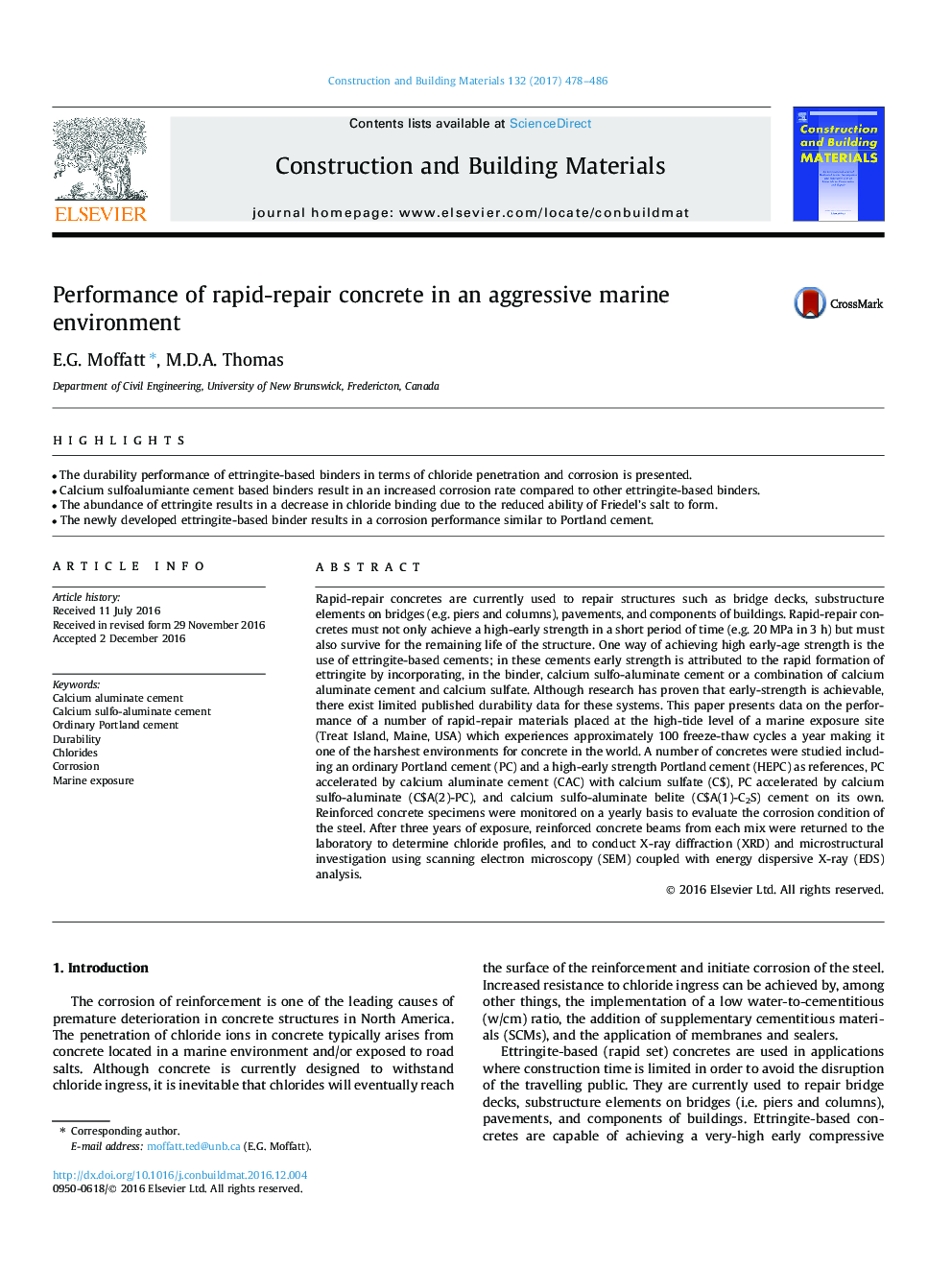| کد مقاله | کد نشریه | سال انتشار | مقاله انگلیسی | نسخه تمام متن |
|---|---|---|---|---|
| 4913849 | 1428774 | 2017 | 9 صفحه PDF | دانلود رایگان |
عنوان انگلیسی مقاله ISI
Performance of rapid-repair concrete in an aggressive marine environment
ترجمه فارسی عنوان
عملکرد بتن سریع تعمیر در محیط زیست تهاجمی دریایی
دانلود مقاله + سفارش ترجمه
دانلود مقاله ISI انگلیسی
رایگان برای ایرانیان
کلمات کلیدی
سیمان آلومینات کلسیم، سیمان کلسیم سولفو آلومینات، سیمان معمولی پورتلند، طول عمر کلرید، خوردگی، قرار گرفتن در معرض دریایی،
موضوعات مرتبط
مهندسی و علوم پایه
سایر رشته های مهندسی
مهندسی عمران و سازه
چکیده انگلیسی
Rapid-repair concretes are currently used to repair structures such as bridge decks, substructure elements on bridges (e.g. piers and columns), pavements, and components of buildings. Rapid-repair concretes must not only achieve a high-early strength in a short period of time (e.g. 20Â MPa in 3Â h) but must also survive for the remaining life of the structure. One way of achieving high early-age strength is the use of ettringite-based cements; in these cements early strength is attributed to the rapid formation of ettringite by incorporating, in the binder, calcium sulfo-aluminate cement or a combination of calcium aluminate cement and calcium sulfate. Although research has proven that early-strength is achievable, there exist limited published durability data for these systems. This paper presents data on the performance of a number of rapid-repair materials placed at the high-tide level of a marine exposure site (Treat Island, Maine, USA) which experiences approximately 100 freeze-thaw cycles a year making it one of the harshest environments for concrete in the world. A number of concretes were studied including an ordinary Portland cement (PC) and a high-early strength Portland cement (HEPC) as references, PC accelerated by calcium aluminate cement (CAC) with calcium sulfate (C$), PC accelerated by calcium sulfo-aluminate (C$A(2)-PC), and calcium sulfo-aluminate belite (C$A(1)-C2S) cement on its own. Reinforced concrete specimens were monitored on a yearly basis to evaluate the corrosion condition of the steel. After three years of exposure, reinforced concrete beams from each mix were returned to the laboratory to determine chloride profiles, and to conduct X-ray diffraction (XRD) and microstructural investigation using scanning electron microscopy (SEM) coupled with energy dispersive X-ray (EDS) analysis.
ناشر
Database: Elsevier - ScienceDirect (ساینس دایرکت)
Journal: Construction and Building Materials - Volume 132, 1 February 2017, Pages 478-486
Journal: Construction and Building Materials - Volume 132, 1 February 2017, Pages 478-486
نویسندگان
E.G. Moffatt, M.D.A. Thomas,
